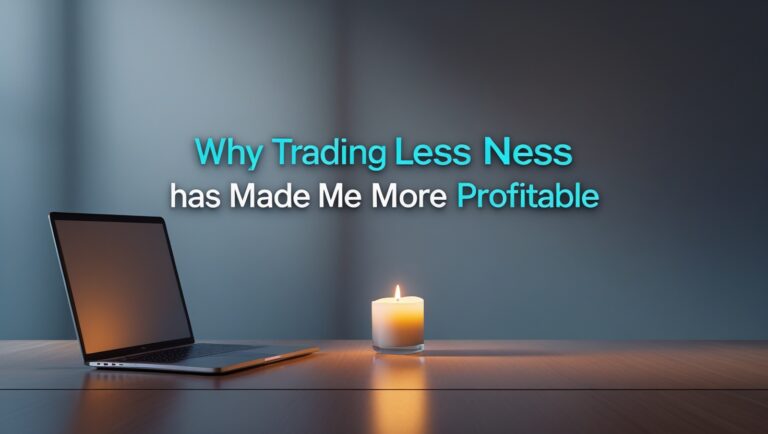How to Start Investing in Stocks Today Even as a Complete Beginner
How to Start Investing in Stocks Today Even as a Complete Beginner
Want to begin your investing journey? Learn how to start investing in stocks today even as a complete beginner with simple steps, tools, and strategies I personally use.

Table of Contents
When I first thought about investing, I had no idea where to start. The stock market felt intimidating, like it was only for experts in suits on Wall Street. But I quickly realized that anyone can start investing in stocks—even with very little money and zero experience.
If you’ve ever told yourself, “I’ll start when I learn more” or “I don’t have enough money yet,” let me tell you something: the best time to start is today. Every small step you take builds momentum. And the earlier you begin, the more time your money has to grow.
Open a Beginner-Friendly Brokerage Account
The first step is to open an account with a broker that’s beginner-friendly and easy to use. When I started, I used Robinhood because it allowed me to start small and even buy fractional shares. Later, I added Webull for its research features and the free stocks they give when you sign up.
If you want to track and study charts without confusion, TradingView is one of the best tools I use daily. Having these platforms made my journey smoother and far less intimidating.
Start Small—Even $10 Is Enough
One of the myths about investing is that you need thousands of dollars to start. That’s not true anymore. With fractional shares, you can begin with just $10 or $20.
I personally started with small amounts because it allowed me to learn without fear of losing big money. What matters most is consistency, not the size of your first investment.
Invest in Companies You Already Know
As a beginner, the easiest way to start is to buy stocks from companies you understand. For me, that meant looking at brands I used every day—like tech companies, food chains, or consumer products.
If you already know how a company makes money, it’s easier to research and feel confident in your decision.
Use Dollar-Cost Averaging
Trying to time the market is stressful and nearly impossible, especially for beginners. Instead, I use dollar-cost averaging—investing the same amount on a regular schedule, whether the market is up or down.
This strategy removes the pressure of finding the “perfect” moment and helps your money grow steadily over time.
Diversify From the Beginning
When I first started, I made the mistake of putting too much money into one stock. Now, I always spread my investments across different companies and even ETFs.
Diversification is like insurance—it protects your portfolio if one stock doesn’t perform well.
Learn As You Go
You don’t have to know everything before starting. I learned more from making small trades than I ever could from reading about investing. Each step taught me something new.
To make your journey easier, I created an ebook that shows exactly how I grew my portfolio and even used stocks to pay bills. It’s beginner-friendly and full of practical advice.
Final Thoughts
If you’ve been waiting for the “perfect time” to start investing, this is it. You don’t need a finance degree or thousands of dollars. You just need the courage to take the first step.
Here are the exact tools I use and recommend:
- Robinhood – simple and perfect for beginners
- Webull – great research features and free stocks when you sign up
- TradingView – powerful charts and analysis tools
And if you want a step-by-step plan from someone who started as a beginner too, grab my ebook here.
Start today—even if it’s just $10. Your future self will thank you.
When I first started investing, I realized the hardest part wasn’t the money—it was overcoming fear. I kept waiting for the “right time” to start. But the truth is, the perfect moment never comes. The sooner you take action, the sooner your money starts working for you.
One of the best lessons I learned early on was that investing is about progress, not perfection. My first few trades weren’t perfect, but they gave me experience. Each small step built my confidence and made the next decision easier.
I also discovered the importance of setting goals. Before buying my first stock, I asked myself: Why am I investing? Was it for retirement, passive income, or financial freedom? Having clear goals gave my investing strategy direction and kept me motivated.
A big mistake I avoided later (but made early on) was putting all my money into a single stock. It’s tempting to go “all in” on a company you love, but diversification is your safety net. Spreading investments across different sectors lowered my risk and reduced stress.
I found that investing in ETFs (Exchange-Traded Funds) is a great beginner move. Instead of buying one company, I bought a basket of them. This instantly gave me diversification and helped me grow with less worry.
Another thing that eased my stress was automation. Setting up recurring investments made the process simple. I didn’t have to decide every week when or how much to invest—it just happened automatically. Over time, those small, consistent contributions added up.
I also learned that you don’t need to be a math genius to succeed. I used to think the stock market was all about complex numbers. But really, it’s about consistency, patience, and common sense. Anyone willing to learn can do it.
Researching companies seemed overwhelming at first, but I made it simple. I looked for businesses with strong reputations, steady growth, and products I actually used. If I could explain how a company made money in plain English, it was a good sign.
One strategy that made a big difference was reinvesting dividends. Instead of cashing out small payments, I let them buy more shares. Over time, this created a compounding snowball effect that grew my portfolio faster.
I also realized that checking my portfolio too often made me anxious. Now, I limit myself to weekly or monthly reviews. This shift keeps me calm and focused on the long-term picture instead of short-term noise.
Another beginner tip is to treat your first investments as “learning money.” Even if you only put in $50, the lessons you gain are worth far more than the profits at the start. It’s like paying tuition for your financial education.
Having access to beginner-friendly tools made all the difference. Platforms like Robinhood and Webull helped me buy my first stocks with ease, while TradingView taught me how to read charts without stress.
Community support also helped me. Joining forums, reading blogs, and connecting with other investors gave me encouragement. But I always made sure to double-check advice with my own research.
One of my favorite parts of starting small was celebrating milestones. My first dividend payment, even if it was only a few cents, felt like proof that my money was working for me. Those little victories kept me motivated.
Finally, I remind myself often that investing is a journey, not a race. Even as a beginner, I didn’t need to know everything to start. What mattered was taking that first step, learning along the way, and staying consistent.

Stay ahead in the stock market! Subscribe to our newsletter and receive exclusive stock flow reports, trading insights, and actionable tips directly in your inbox. Join thousands of traders who get our updates first.







